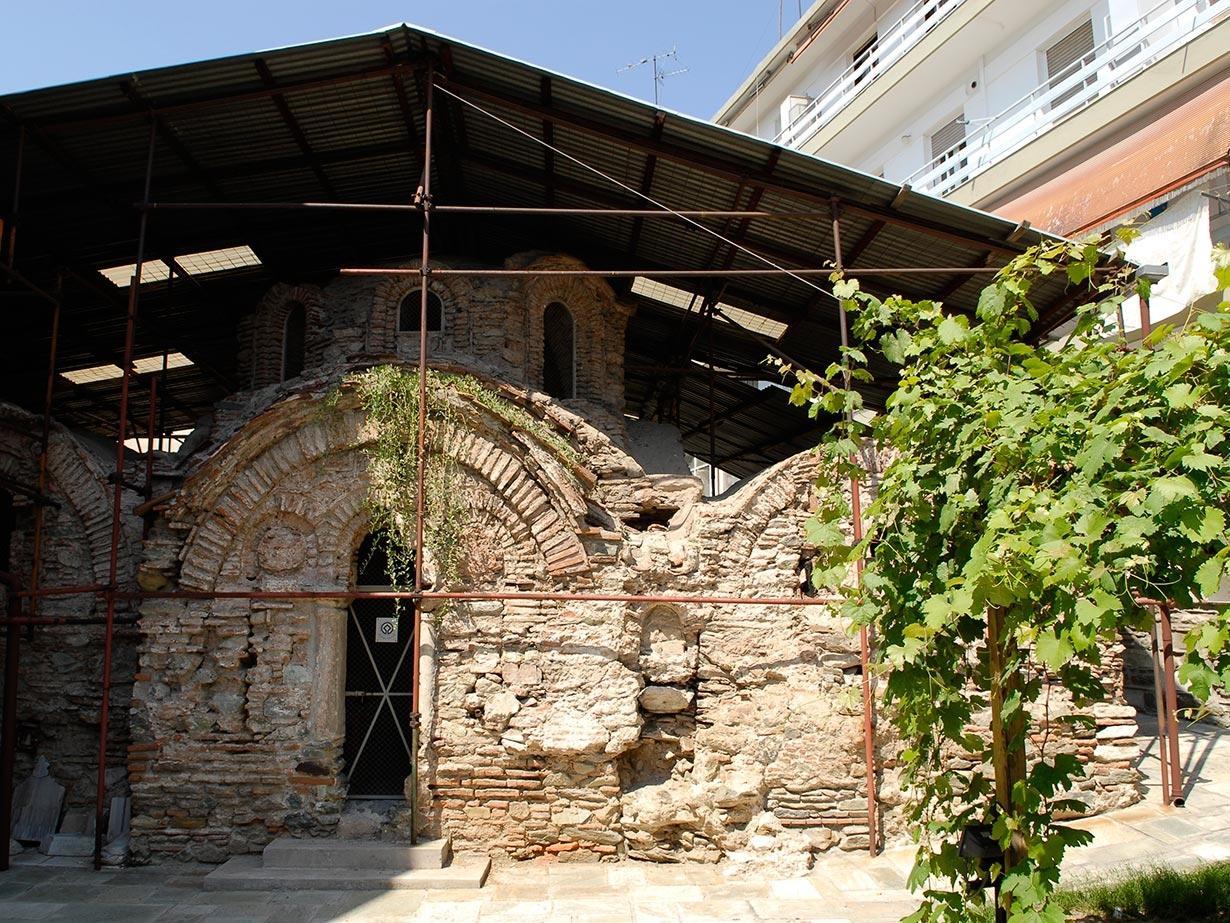Rotunda, one of the most important and imposing monuments of Thessaloniki, with its architectural strength and its wall mosaics of incomparable art and beauty internally, constitutes a special monument, balancing uniquely between the pagan and Christian world. It was founded in the early 4th AD century, probably as a temple of the ancient worship or mausoleum of Constantine located on the axis of the processional route, which connected the triumphal arch of Galerius with the palace complex near the present Navarino Square. The circular and dome roofed emblematic monument has a height of 29.80 m., diameter 24.50 m., width of walls 6.30 m.. Architectural can only be compared to the Pantheon in Rome. Shortly after its construction, it was converted into a Christian church dedicated to the Aghioi Asomatoi or the Archangels. It was Metropolis of Thessaloniki from 1524 to 1591, when it was converted into a mosque by the Ottoman conquerors until the liberation of Thessaloniki in 1912. The dedication of the monument to Saint George is due to the neighboring, small, homonymous church. Today the Rotunda, with a history of over 1700 years, is both church and cultural – archaeological monument, where the litany (performed once per month) combined with the tourist visiting and hosting cultural events that match the character and history of the monument
 Byzantine Baths
Byzantine Baths 








